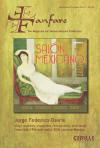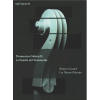Texte paru dans: / Appeared in:

Fanfare Magazine: 36:1(09-10/2012)
Pour
s'abonner / Subscription information
Les abonnés à Fanfare Magazine ont accès aux archives du
magazine sur internet.
Subscribers to Fanfare Magazine have access to the archives of the magazine
on the net.
Agogique
AGO001

3700675500016
Consultez toutes les évaluations recensées pour ce cd
~~~~ Reach all the evaluations located for this CD
This release should be snapped up immediately by every lover of the cello before it disappears, as CDs are now wont to do with distressing frequency and rapidity. Cellist Bruno Cocset, who has collaborated with Jordi Savall among other artists, is one of the world’s most accomplished exponents of Baroque music on period instruments. Previous recordings of his have uniformly won rave reviews in these pages, and this review will add to that list with alacrity.
The set itself is a deluxe issue, consisting of the CD and accompanying book housed in a sturdy cardboard clamshell box the size of a standard DVD case. (The plastic CD holder glued in the back of the case even says “DVD” at the top.) Note that I say “book,” not “booklet,” for that is indeed what is provided as well. More than 120 pages long and printed on glossy paper, it contains an introductory essay by Cocset on the origins of various early types of cellos and brief notes on each of the composers; a list of the pieces performed and the instruments severally used to perform them; a list of the performers and details on the instruments they play; and more than 60 photos (all but six in color) of the seven instruments at various stages of creation—made by the master French luthier Charles Riché between 2000 and 2009—that Cocset uses to perform these works. These photos are not only fascinating, but often stunningly beautiful; even a close-up shot of a pile of wood shaving curls forms a lovely still life.
The seven instruments include three different types of violoncello, one a reproduction of a 16th-century instrument by Gasparo de Salò (Gasparo de Bertolotti, 1542–1609), one a reproduction of a 17th-century Italian instrument, and the third unspecified.
There are also two tenor violons a la bastarda. The term “bastarda” refers to both a type of adapted viol and to a performance practice in which polyphonic compositions were ingeniously adapted to a single melodic line derived from their various parts, to which embellishments and improvisations were then added. The nature of the instrument itself is a subject of conjecture; equipped with five strings, it is believed to have been a small member of the bass viol family, possibly related to the English division viol. One instrument was created based on a still-life painting by Bartolomeo Bettera (see the review by George Chien in Fanfare 33:1 of Cocset’s recording of works by Bach), the other modeled on an Amati violin.
Cocset also employs an alto viola a la bastarda, also created on the basis of the Bettera painting, and a six-stringed bass violon a la bastarda, based upon an Amati instrument.
The booklet does have some frustrating oddities. The pages are not numbered; the essays are provided in French, English, and German, but inexplicably not in Italian, while the occasional brief notes on the photos are in French and English only. Information is scattered inconveniently. The tracks and timings are not listed in the booklet, but only on the back of the clamshell box, but one must turn to the table of contents in the booklet to keep track of which instrument is used to perform which piece. One wishes that more thought had been given to the organization of such information, but that is a small cavil in light of the treasures actually presented here.
The disc itself contains 12 works—two sonate da chiesa (one in two different versions), eight ricercari, and one canon—by Domenico Gabrielli (1659–90); four sonate da chiesa by his pupil Giuseppe Jacchini (1667–1727); two passacaglias (spelled “passagaglia” here) and one ruggiero by Giovanni Batista Vitali (1632–92); and one ricercar by Giovanni degli Antoni (1636–after 1696). All these items, based on various dances forms, are quite brief, none lasting longer than seven minutes and most ranging from two to four minutes. All four composers were lifelong natives of Bologna and the surrounding region. While little is known of Giovanni degli Antoni beyond his employment as a cellist and church organist and his few surviving compositions, Vitali, Gabrielli (no relation to Andrea and Giovanni Gabrieli of Venetian fame), and Jacchini formed a three-generation master-pupil lineage of cello virtuosi. All four also were members of the city’s famed Accademica Filharmonia; Gabrielli served for a time as its president, and Jacchini later created scandal by his neglect of concomitant spiritual and devotional functions. Vitali and Gabrielli also both spent several years in the employ of the ducal court at Modena. While Gabrielli’s oeuvre includes several operas, his fame today rests primarily upon his Ricercari per Violoncello Solo; published in Modena in 1689, it was the first printed collection of solo pieces specifically intended for the cello, and so selections drawn from that rightly dominate the present recital.
Cocset’s playing is stupendous; one is simply entranced by the amazing variety of timbres he draws from the various instruments at his disposal, as well as his seemingly effortless virtuosity and deep interpretive sensitivity. The members of the ensemble Les Basses Réunies—Emmanuel Jacques and Mathurin Matharel on cellos, Richard Myron on double bass, and Bertrand Cuiller on harpsichord and organ—provide exemplary accompaniment as required. While it probably will not make the final cut in an already crowded field, this release is at least a semifinalist for my 2012 Want List.
Cliquez l'un ou l'autre
bouton pour découvrir bien d'autres critiques de CD
Click either button for many other reviews


